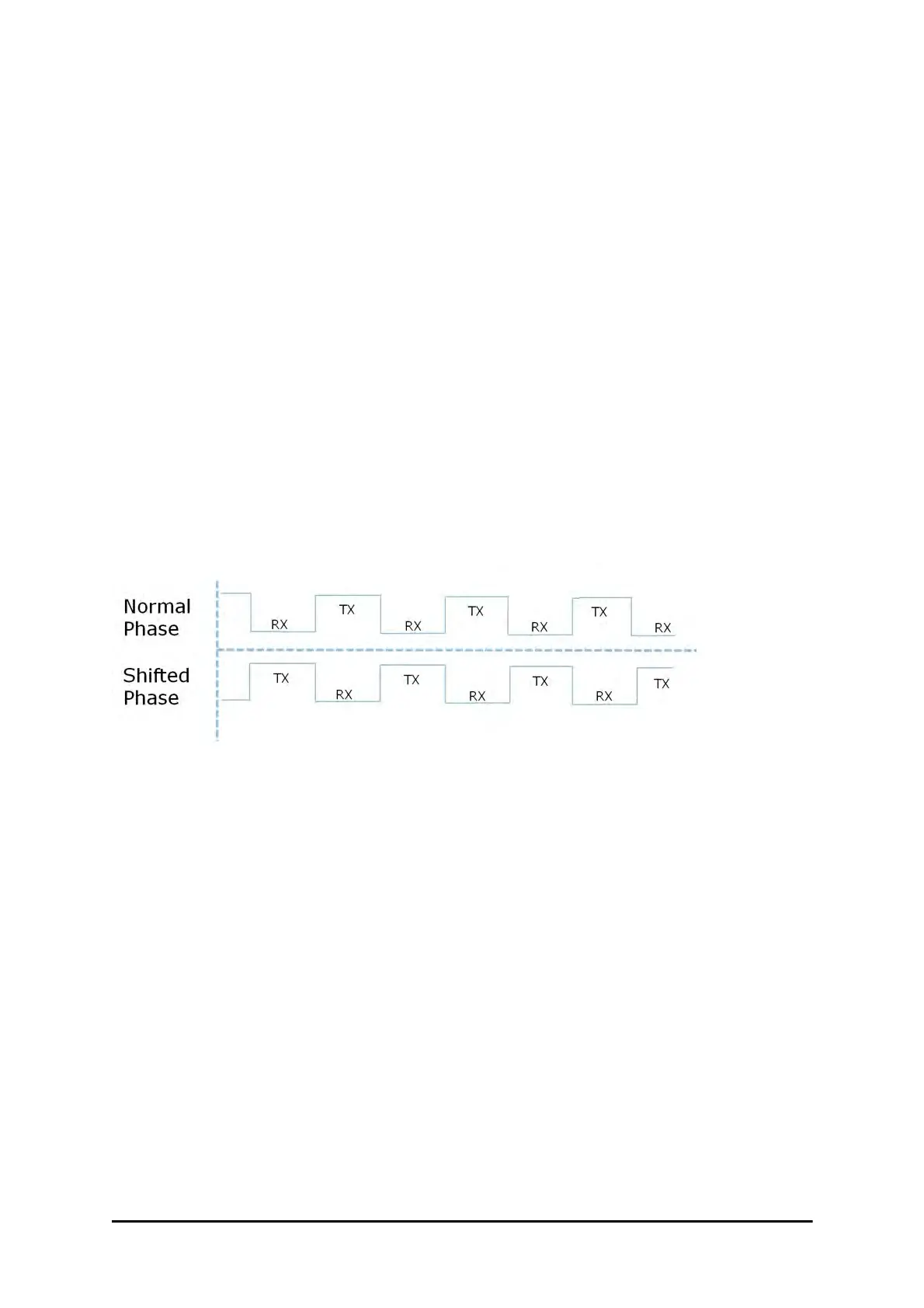Cascaded Sites using Shifted Phase Transmission Chapter 11
WinLink 1000 User Manual Release 1.9.40 11-3
Cascaded Sites using Shifted Phase Transmission
The solution offered here is not a “universal cure”. The following conditions are necessary, but
in any specific case may not be sufficient:
• The GSU sites (marked 1, and 3 above) are sufficiently far apart as to ensure that
there is no mutual interference between communicating sites (1-2 and 2-3 above)
• There should be no interference between non-communicating sites (1 and 3 above).
To see how it works, we use Figure 11-2. The GSU towers are numbered and marked for
cascading, 1-2 and 2-3. There should not be a link between 1 and 3.
The GSU can synchronize the TDD timing of several sites enabling the cascading of consecu-
tive links without mutual interference.
To use cascading, the TDD timing of the even-ordered links (GSU 2 above) must be “shifted”
(Shifted Phase) and odd-ordered links (GSU 1 and GSU 3 above) must be “unshifted” (Normal
Phase). The phase shift is half of the Radio Frame Duration (RFD) from the chosen RFP. The
scheme is shown in Figure 11-3.
Since the GSU is always HSS master (HSM), at each GSU location, the GSU can “force” the
synchronization of its collocated radios. By half RFD shifting, alternate collocated sites can
talk to each other.
Figure 11-3: Phase shifted transmission - phase shift is 1/2 the RFD
Choice of normal or shifted phase is configurable per GSU using the RADWIN Manager.
GSU Redundancy
The GSU is designed to support redundancy, improving the robustness of a GSU based topol-
ogy.
In redundancy mode, two GSUs are installed at the same HSS site. One of them self-config-
ures to generate HSS sync signals. We will call it the Primary unit. The other one, the Second-
ary unit remains dormant merely polling the first GSU. If the Primary GSU fails, then the
Secondary GSU becomes active immediately. If the Primary unit becomes active again, it
remains dormant, reversing the original roles. The choice of the Primary GSU is random and
of no significance.
If the Primary GSU fails, and then the Secondary GSU also fails to receive sync signals from
its GPS, then it moves to self-generation HSM mode like an ordinary HSM ODU until its GPS
recovers.

